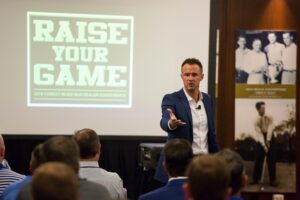What does returning to the office look like?
After being home for a year or more, people are returning to the office in droves.
A year is a long time and much has changed in each person’s life during their time away from the office.
Sadly, some have lost family members or friends to the pandemic. Others have seen their marriages fall apart. Weight has been gained or lost, new hobbies and passions have been discovered, and many have taken a long hard look at their careers.
Returning to the office this time looks nothing like coming back after a long weekend or even an extended vacation or parental leave. While some people will be excited to get back to the office – and back to “normal” routines, that will not be true for everyone.
Understand some employees will be feeling anxious or filled with dread about returning to the office. Reasons may include worries about health, a desire to continue avoiding a challenging commute, or lack of childcare. And, of course, for some there is a real aversion to getting back into the formality of office life (including wearing actual pants).
What does it mean to get back to normal?
It’s a commonly held belief that it takes 21 days to build a new habit. (And it has certainly been more than 21 days that many have been working from home.) The conversation is now less about the challenges and benefits of working from home and more about “getting back to normal.” That return to normal will no doubt be different for every organization and, to a certain extent, every team member within an organization.
As teams and organizations come back together, it’s important to recognize there will be challenges and to prepare to work through them. Each team member brings their own pandemic experience – unique and, in some cases, profound.
Each member of your organization also brings their own expectations about what a return to the workplace will look like. In many cases, they’re seeking a better experience than the one they left.
During this extended time of working from home and limited social interactions, connections have been lacking – and so very missed – from all of our lives. We’ve longed to truly connect with others – loved ones, friends, and yes, those with whom we work.
How can leaders ease the transition back to the workplace?
Leaders face a crucial challenge now. They must renew connections with team members from whom they’ve spent many months apart. In many cases, leaders have brought new members into their teams or organizations during the past year. They’ve never had the opportunity to connect with these employees face to face.
Leaders need support and strategies to help their teams through this transition successfully.
Plan to provide leaders within your organizations tools and strategies to help them bring their teams back successfully. Relearning to work together – while actually being together – will take time. Equip and empower leaders with tools, tactics, and strategies to help retain and encourage employees and drive results.
Consider hosting an event and bringing in a speaker who is an expert in these very areas. At Michelle Joyce Speakers, we represent some of the very best. Read on to learn about three of our keynote speakers whose programs effectively answer the question leaders at every level of an organization must be ready to answer: “We’re all back in the office. Now what?”
Alan Stein, Jr. – Raise Their Game
A successful business owner, author, and former veteran basketball performance coach, Alan Stein, Jr. is uniquely qualified to speak about developing individuals and building teams that perform at the highest levels. Leaders at every level of your organization will benefit from learning tactics they can put into practice immediately as they enjoy hearing stories about Alan’s days working with NBA legends like Kobe Bryant and Steph Curry.
Alan says, “A leader’s primary job is to create an environment where people feel safe, included, appreciated, valued, respected, inspired, empowered, and challenged.” Those words are true now more than ever.
Leaders at all levels of an organization will benefit from Alan’s inspiring and actionable message as they learn how to lead their team members to Raise Their Game.
Colette Carlson – The Connected Leader
Colette Carlson is a Hall of Fame keynote speaker and human behavior expert who transforms relationships through the power of connected conversation. Her powerful program, The Connected Leader, teaches leaders in your organization how to transform relationships through the power of connection.
A connected leader is one who helps create a culture of clarity, transparency, inclusion, and accountability. In other words, the kind of culture that thrives even in the most challenging of times.
Connected leaders are able to:
- Drive positive change
- Earn trust, respect, and loyalty
- Create a culture that allows people to connect, grow, and flourish
Leaders in your organization will be inspired to build and nurture relationships within their own teams and throughout the wider organization as they become connected leaders.
Jim Knight – Leadership That Rocks
Jim Knight brings excitement back to the workplace. His career highlights include Gatorland Zoo (he has the scars to prove it) and Hard Rock International where he led Global Training for two decades. Jim’s customized programs teach organizations how to amp up their culture, deliver world-class differentiated service, and build rock star teams and leaders.
Jim’s program, Leadership that Rocks, provides leaders with best practices and takeaways they can immediately put into practice, setting them on the road to rock star success.
Leaders will learn how to:
- Hire rock stars
- Enhance employee engagement
- Amp up communication
- Foster mentorship and accountability
- Become heart-centered
Rock star leaders create iconic businesses – internally and externally. Inspire leaders within your organization to become leaders who rock.
Ease the transition into the new normal.
This last year has been filled with experiences like nothing we’ve ever seen. That simply can’t be overstated. The disruption to the workplace was unprecedented and often unpredictable. Bringing people back into the workplace needs to be handled thoughtfully. Provide your leaders with the tools, tactics, and strategies they need to support their team members as they seek to build effective teams and strong connections.
There is so much to unpack and consider when thinking about what it means to go back to the workplace that it wouldn’t all fit into one blog post. Click here for more on this subject in Part 2.






